Unique Foden timber tractor lives on in safe preservation
Posted by Chris Graham on 26th September 2023
Zack Stiling recounts the fascinating story of a unique Foden timber tractor which, against all odds, has survived into preservation.
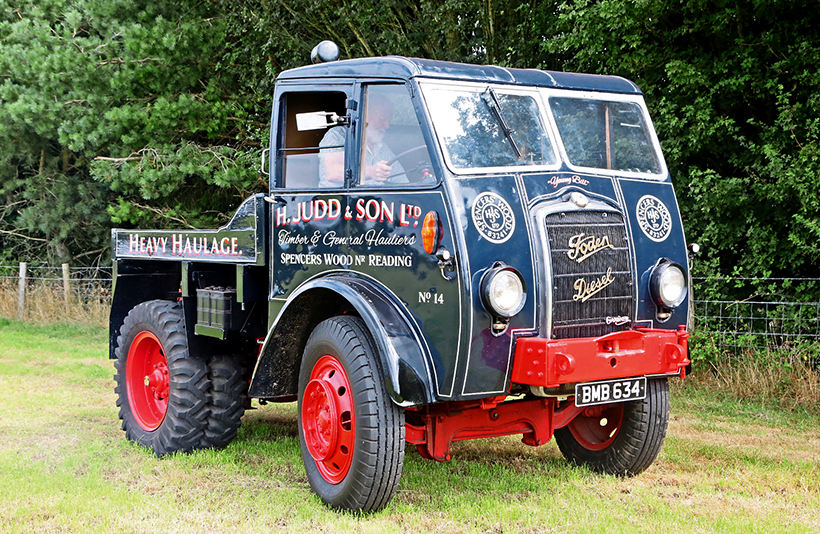
Foden timber tractor lives on: BMB 634 was one of Foden’s very first, purpose-built timber tractors.
From the early 20th century up to the 1960s timber haulage was in its heyday, as majestic traction engines took over from stout carthorses and were, in turn, succeeded by faithful old Gardner diesels in AEC Matadors and the like. There’s little evidence today of the hundreds of timber haulage firms which once operated across the country, but the Judd family is doing its bit to preserve their legacy. Indeed, there are few more enthusiastic operators of preserved timber tractors, and the contemporary Judd fleet includes two Canadian Fords and this extremely rare 1935/42 Foden Whitlow TG5 tractor.
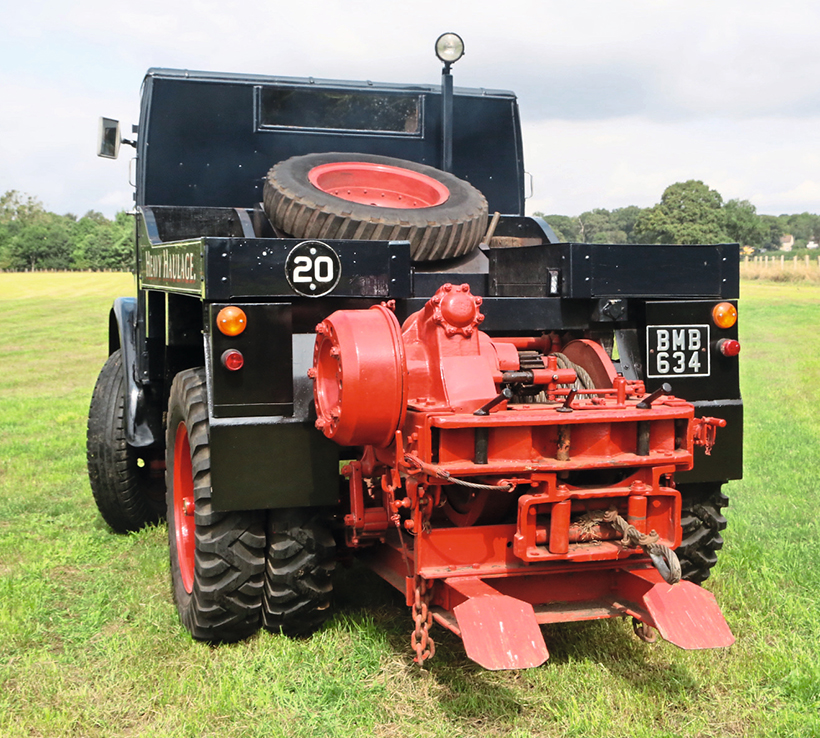
You’d not believe it was no more than a bent chassis and seized engine when the restoration began.
The Foden is owned and rallied by Lewis Cadnam, whose grandfather was Harold Judd, patriarch of H Judd & Son of Spencers Wood, near Reading, which operated it from nearly-new. Foden, of course, is famous for its role as an unlikely pioneer of diesel power, but the story of how it came to embrace oil engines is fascinating. The first indication of an ill wind starting to blow at Sandbach was when the sage, paternalistic figure of William Foden retired from the firm in 1924. His brother, Edwin Richard Foden, himself no fool, stayed on. By 1930, the mass replacement of steam engines in industrial applications with diesel power made it obvious to him that the future of road transport would be diesel, too. However, makers of petrol lorries hadn’t acted on the potential of diesel yet, and he saw his chance to get ahead of the game.

Heavy-duty batteries are required for the big five-cylinder diesel.
He approached Foden’s directors with his ideas and was roundly shot down by an uppity board which insisted that Foden was the world’s finest maker of steam tractors, and would remain so forever and always. Somehow, though, ER and a few like-minded engineers managed to develop their own diesel lorries, possibly without the knowledge and certainly without the approval of the board, which went into limited production in 1931 and proved a great commercial success. Unfortunately, their experimental nature meant they had certain flaws and they ended up losing the company money.
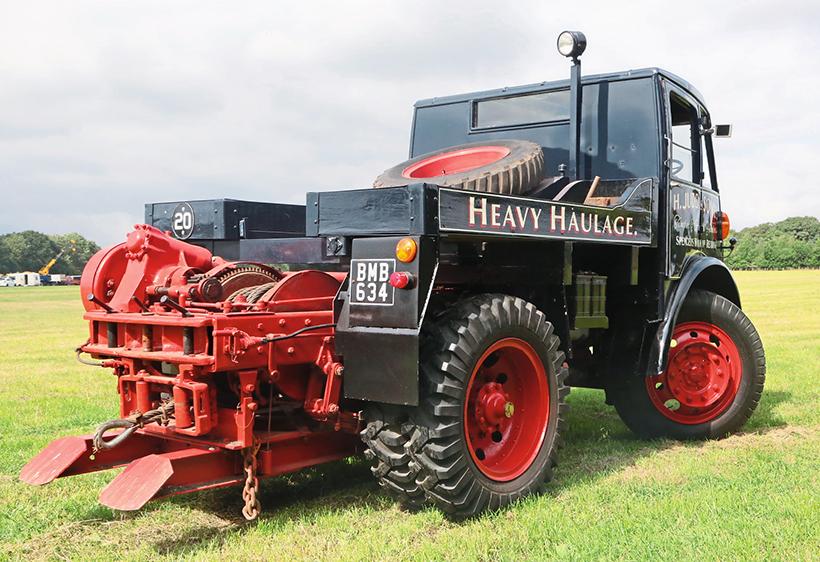
Enormously powerful, it was well-received by the major timber hauliers of the 1930s.
Edwin Richard grew infuriated with the attitude of management, resigned from Foden and established ERF so he could do things his own way. That’s when things started to go from bad to worse for Foden. The Salter Report was published in 1933, corrupted – many suspected – by money from corporate oil, which effectively condemned steam haulage to death by taxation. It forced most makers of steam wagons out of existence, and Foden had squandered its opportunity for a smooth transition to diesel. What’s more, it had a senseless and uneconomical approach to construction with its range in the early ’30s, all of which made use of different axles, different brakes and different engines.
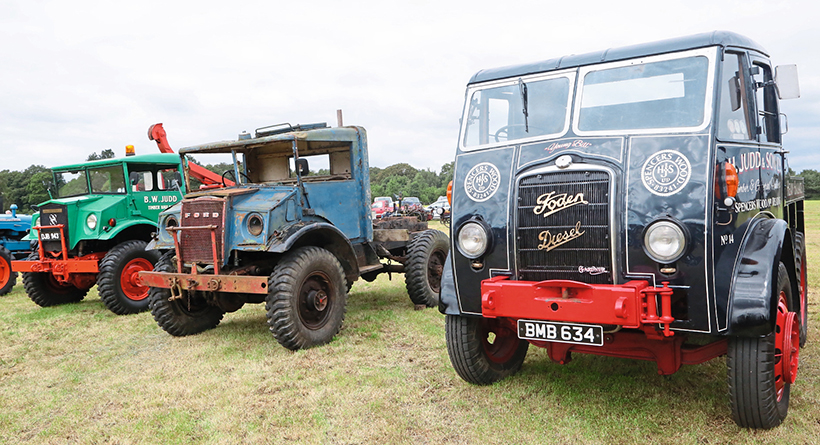
The Foden is often shown alongside two Judd Fords.
At a time when all other oil-engined lorry makers were doing extremely well, Foden started incurring huge financial losses. William Foden was by now living quietly in Australia, but was aware things were going downhill in Sandbach. While on a visit to the factory in 1934, he was met with clamour from old employees pleading for him to come back. Pitying the state of things, he agreed, and restored Foden to order within a few years.
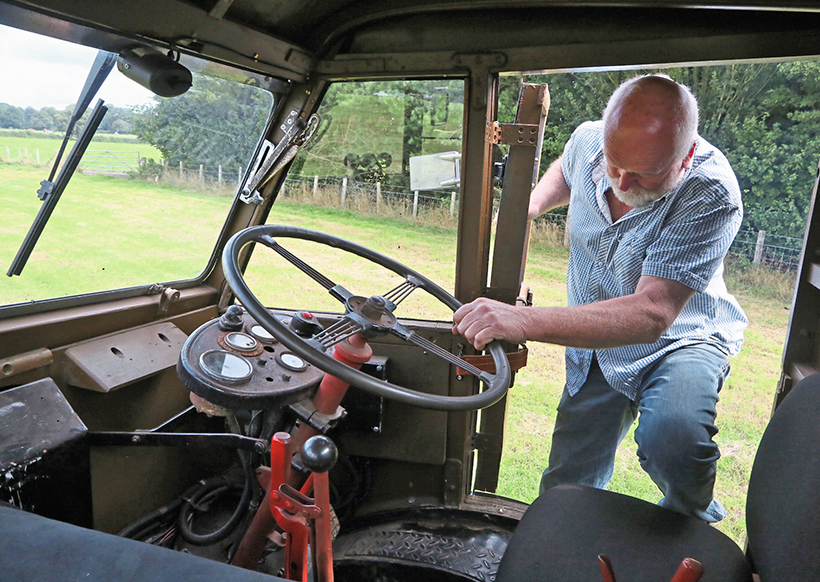
Climbing into the high cab is an exercise in itself.
It also happened that the last Foden steamers were made in 1934 and, as yet, there was no oil-engined replacement for them. The subsequent introduction of the TG5 was a landmark in its own right, for it was not only Foden’s first diesel-powered timber tractor, but its first purpose-built timber tractor altogether. Although C-types and D-type steamers had been very popular in that role, they hadn’t been specifically designed for it.
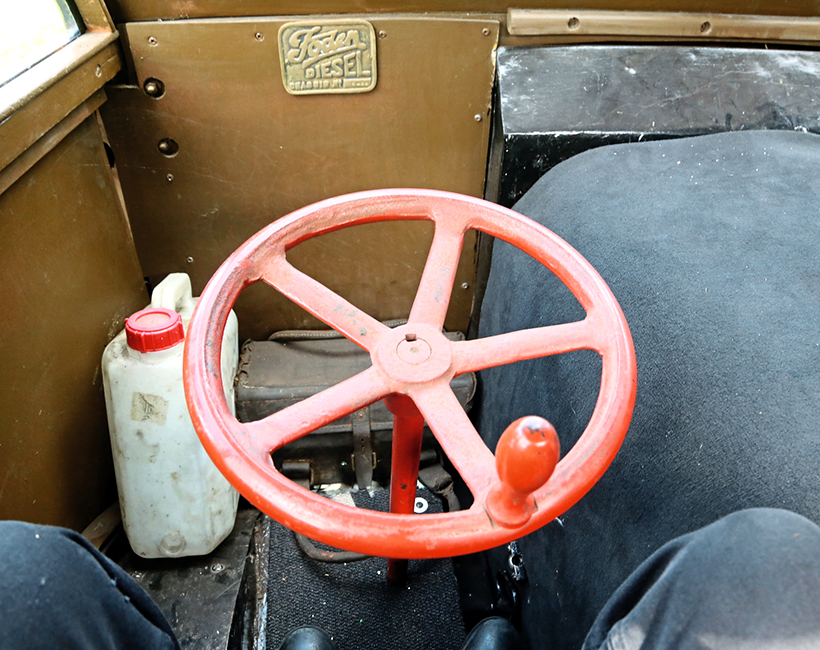
The controls are slow and heavy, but they do their job well.
An odd-looking beast, the TG5 still held on to certain relics from the steam age. Like the C- and D-types, it had transverse-leaf front suspension and chain-drive, but the 85hp Gardner 5LW engine, mounted transversely behind the cab, was the height of modernity. The reason for its unconventional positioning stemmed from its designers’ belief that the resulting weight distribution would be the best for maintaining traction on soft terrain. The high-up, coach-built cab was an adaptation of the W2-type cab, which itself was developed from the R-type lorry’s.
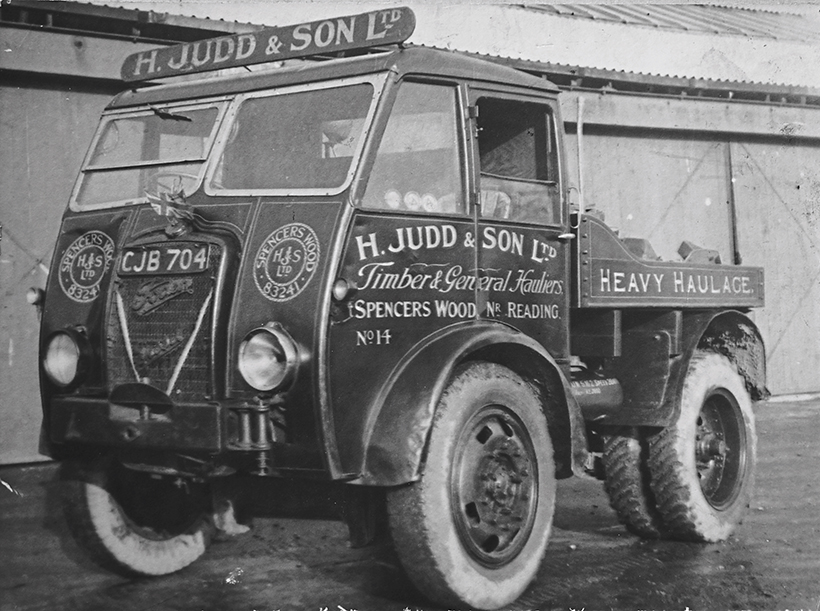
This is another similar Foden tractor, of which there were several in the Judd fleet.
The mudguards were mounted high and stopped above the centre of the wheels so as not to become clogged with mud churned up by the tyres, and the drive-chain was enclosed within a guard to protect it from the ingress of dirt and water. Two ground anchors, one at the rear and one below the cab, could be operated from within the cab, and the rear-mounted winch provided 100 yards of steel cable.

These Fodens were capable of immense feats of strength, but they sometimes took a beating.
Within the company, the TG5 was known as the Whitlow, referring to the fact that it was jointly developed by Foden’s recently deposed general manager, Reginald Wood Whittle – previously a bitter opponent of Edwin Richard’s diesel experiments – and chief designer Edwin Twemlow. The official ‘TG’ designation, however, stood for ‘Timber tractor, Gardner engine.’ In use, it was capable of travelling at 25mph pulling 12 tons, although legally it was limited to 20mph. With a 15-ton load, it was still capable of a steady 12mph.
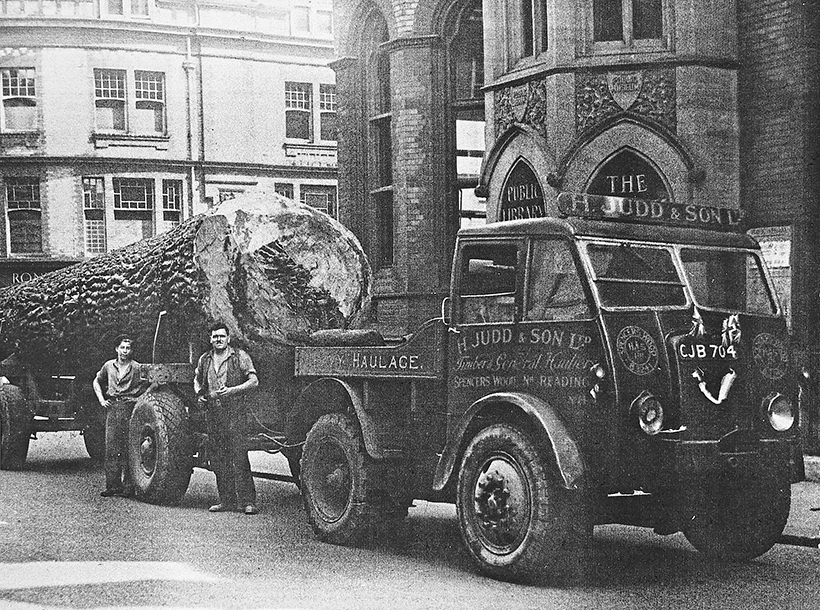
This Foden, with Foden-built trailer, is seen c1945 transporting a tree, which grew near Mapledurham Church, to the London Plywood Company at Ponders End. Wally Dell is the driver and George Emmett the mate.
Only 14 Whitlow TG5s were ever made, and just one of those still survives in original condition, but two more, including BMB 634, survive having undergone substantial modifications to STG5 specification during wartime. Even so, BMB 634 is arguably the most important survivor, being one of the first two prototype models which Foden used for testing. It was originally sold to the timber firm of TH Pain Jnr. of Cleobury Mortimer, near Kidderminster, while the other prototype, JU 4315, went to Coltman Bros in Claybrooke, in Leicestershire. Being slightly experimental in their nature, Foden would modify and improve the two prototypes in accordance with feedback from the operators, without the operators being charged during the initial two-year test period.

They could maintain 12mph pulling 15 tons.
Other TG5s found buyers among various prominent timber hauliers of the time, including John Sadd of Maldon, Jabez Barker of Shrewsbury, Darke of Worcester, Halfords of Whetstone Saw Mills, Webb of Marchwood and Wheelers of Sudbury. Pickfords took delivery of the final two.
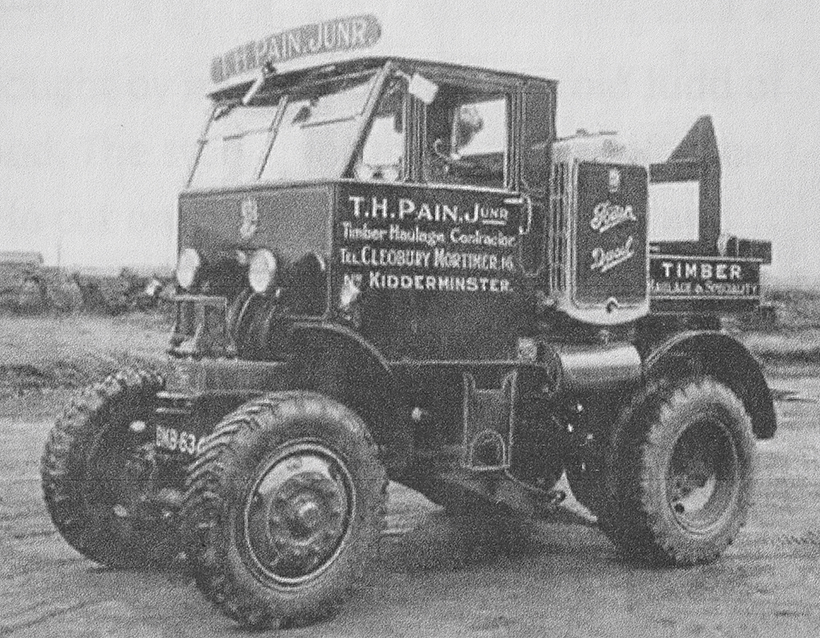
This shows BMB 634 in its original TG5 guise, as supplied to TH Pain.
Harold Judd bought BMB 634 when it was still fairly new. After switching from steam to diesel, he seems to have developed quite a penchant for Fodens. The bulk of the Judd fleet was comprised either of them or ERFs. To the best of Lewis’s knowledge, his grandfather actually had two TG5s, but he cut one of them up to sell the engine. He had plans in mind for BMB 634, though, and by the time he’d finished it was literally a different vehicle. In 1942, he returned it to Sandbach to have it updated along the lines of the new shaft-drive STG5, which was introduced in 1936 as the immediate successor to the TG5. The ‘S’ simply referred to its S-series cab.
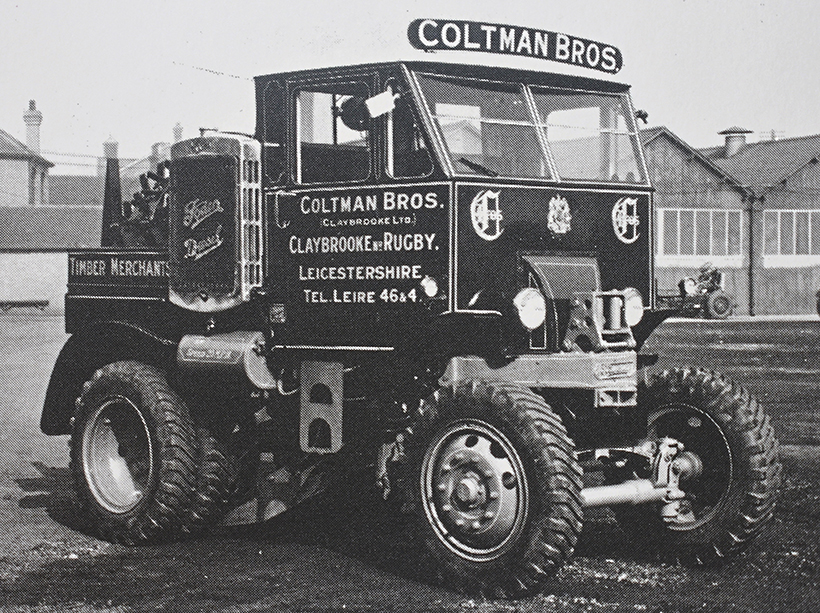
The other TG5 prototype, in a Foden promotional photograph, as supplied to Coltman Bros.
Apart from being converted to shaft-drive, the most obvious change to BMB 634 was the fitment of the more modern-looking and conventional S10 cab, which also caused the engine to be relocated and longitudinally mounted along more normal lines beside the driver. For strict accuracy, the S10 cab was actually borrowed from the DG5 lorry, while production STG5s made do with the earlier S9 cab. However, the two Pickfords TG5s were supplied from new with modified S10 cabs which had the cut-out for the engine filled in… It gets confusing, but it should suffice to say that virtually the entirety of BMB 634 – including the chassis – was replaced. All that remained from its 1935 specification was the engine and wheels. The other tractor which updated to STG5 specification was later further modified with an S18 cab, so each of three survivors is unique in its own way.
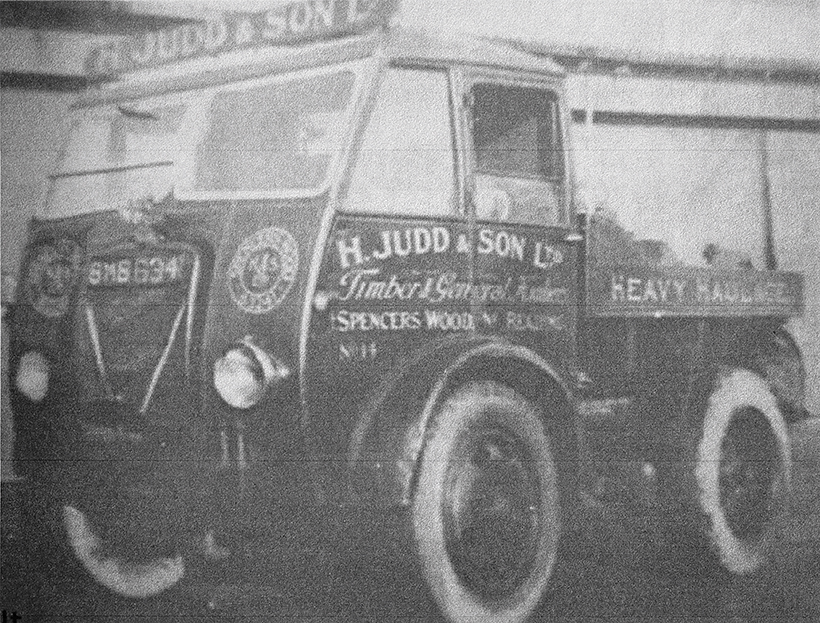
It’s seen here in its Judd livery, shortly after its radical overhaul
It seems, however, that Judd no longer had much use for BMB 634 after that. It was sold to HJ Green of Norwich, and then passed to SA Fish & Sons of Henfield, East Sussex. Its next owner was James MacDougan of Runcorn, who kept it until 1979. Harold Hankey, of Crewe, owned it next, and it was bought from him in 1983 by one J Perkins, who kept it until 1999. The new owner was Robert Young of Aldermaston, who lived very much on Judd territory, and it was he who realised that it had once belonged to Lewis’s grandfather. Of course, it was only right and proper that Lewis, being enthusiastic about old lorries and given his family history, should buy it back, and that’s just what he did in 2012.
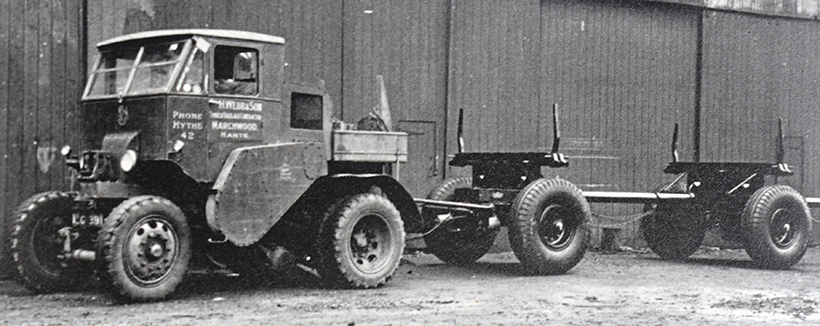
This TG5 carries a two-axle timber trailer in the service of H Webb & Son of Marchwood, Hants.
It all sounds a nice, happy story, but there was a catch. Over the years, the Foden hadn’t been all that well cared-for. The TG5, as it was loaded into Lewis’s workshops, wasn’t much of a TG5 at all. It had no cab, no wings, no back boxes and no diesel tank – not much of anything, for that matter. All it consisted of was two chassis rails, one of which was bent, a seized engine and five boxes, which contained the gearbox, axles, winch and so on in a dismantled and disorganised state.
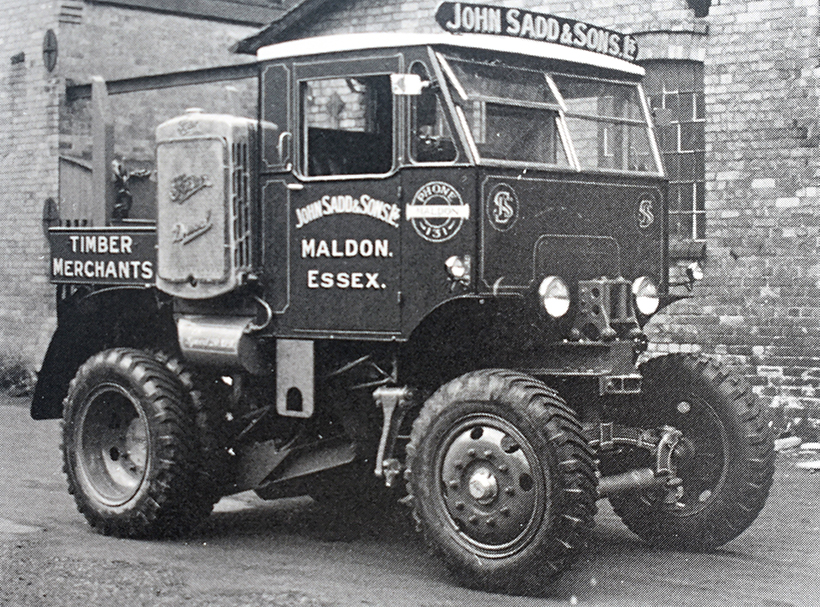
John Sadd & Sons of Maldon, Essex, was once one of Britain’s largest sawmills, and bought this TG5 new in 1936.
Lewis was born in 1952, the same year his grandfather died, and H Judd & Son was wound-up the following year. Lewis’s uncle Basil ran his own timber haulage firm, though, and his father went to work for TT Boughton & Sons, the famous Amersham timber firm, so he was heavily exposed to the industry all through his formative years. “When I left school, I became a truck fitter,” he says. “A mate of mine had old lorries, but all the time I was working for myself I didn’t really have time for them.”
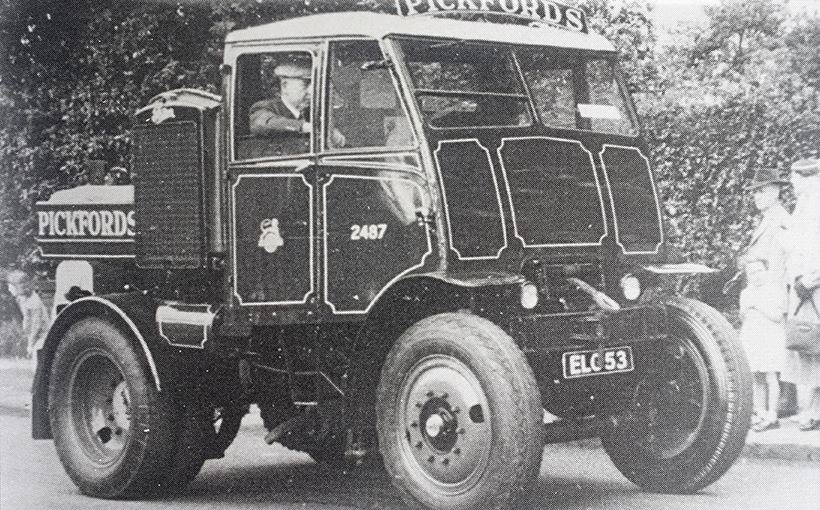
The final two TG5s, built for Pickfords, carried S10 cabs with the engine cut-outs covered over.
There was a lot of work ahead for Lewis and his equally enthusiastic son, Robert. Their first job was to straighten the chassis by heating the bent rail and clamping it to a steel girder, and they then drilled and fixed the rear spring hangers, which had become loose. If it wasn’t for a combination of ‘hard work and good luck’, the project wouldn’t have reached completion. But there were times when fortune seemed to smile upon them, such as when they came across another, perfectly useable 5LW engine and a whole cab which was in good condition. The cab, however, came with an entirely separate lorry attached to it, but since it was incomplete Lewis didn’t feel guilty about appropriating its cab to bring his one back to life.
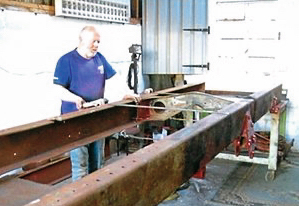
Lewis Cadman begins work on straightening the chassis.
In any case, the new cab still required work. The back needed to be completely replaced with new steel and wood, and Lewis and Robert had to make an inner floor for it, and they also had to fabricate new front wings from scratch. When the body was eventually completed, it was treated to a handsome coat of paint from Jim Sarney. Summarising it like that makes it sound straightforward, but it took seven years of Saturdays and Sundays before it was ready for the road again, landing on the rally circuit in 2019. On completion, Lewis christened the Foden Young Bill in honour of Old Bill, the famous Sentinel steam tractor which Judd operated in the 1920s.
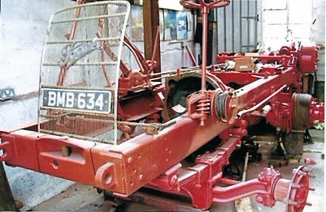
Once straightened, it cleaned up fairly well.
For all his time spent around lorries, Lewis had never had anything as old as the Foden before. To drive, he says, “It’s quite slow and noisy but they all were at that time, and the brakes aren’t too good. You have to be careful where you drive it. It’s a bit of a culture shock for anyone who’s not driven anything that old before, but it’s all right.”
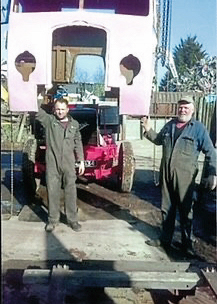
Lewis and Robert were lucky to find a donor lorry with a useable DC cab.
The crash gearbox has four speeds in addition to an extra-low gear, for speeds lower than walking pace. Says Lewis, “The engine wasn’t powerful enough so, instead of putting a bigger engine in, they gave it a lower gear to get it up the hills.”
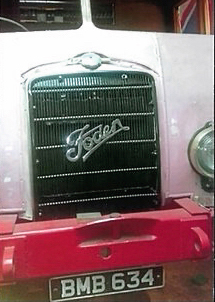
The replacement cab slotted nicely onto the original chassis.
The finished Foden is now widely rallied around Berkshire, Hampshire and neighbouring counties, and stands out wherever it goes. Unique, historic and beautifully restored, it is without doubt one of the most interesting recent additions to the preservation scene.
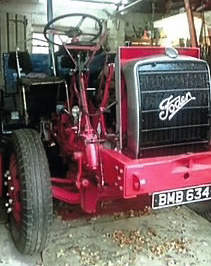
The chassis is a handsome sight, even without the cab.
This feature comes from the latest issue of Old Glory, and you can get a money-saving subscription to this magazine simply by clicking HERE
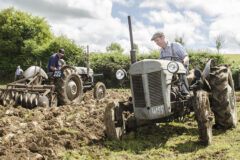
Previous Post
Fantastic Cultra working day in Northern Ireland

Next Post
Very rare French-built steam roller spotted in Oxfordshire!



